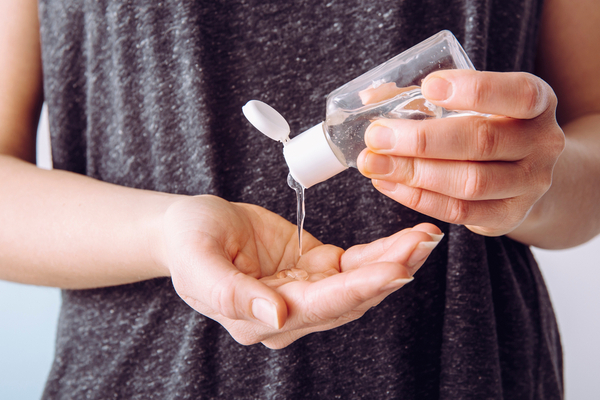It’s five months into COVID-19 being an official global pandemic, so you’re probably familiar with the common safety refrains. Stay home if you’re sick. Keep your distance (at least six feet, with 10 to 15 being even better according to the CDC). Wear a mask. Wash your hands.
Per CDC guidelines, soap and water will always win the hand hygiene game since they actually reduce the amount of germs on your skin, hand sanitizer is a passable stand-in to deactivate most germs. It must be hand sanitizer that actually works, though—and there are many sold that can’t do the dirty work. Of course if there is an active hand sanitizer recall, or some sanitizers on the market found to be toxic (like those with Methanol) then obviously those are ones to avoid.
Here are five more signs that your hand sanitizer isn’t up to the task (and might be putting you at increased risk for potential infections).
- It’s made with essential oils instead of alcohol.
Some websites and blogs have promoted essential oil hand sanitizer recipes, especially this year in light of product shortages. But since you need a fairly high amount of alcohol to break down a microorganism’s protective shell, the CDC says a hand sanitizer must be at least 60% alcohol to be effective. Essential oils contain zero, so unless there’s alcohol (such as isopropyl alcohol, AKA rubbing alcohol) in the homemade hand sanitizer recipe you’re considering, skip it.
- You’ve been storing it in your steamy car.
Contrary to that viral social media post, your hand sanitizer won’t burst into flames or explode if you store it in your car. It will, however, begin to lose potency—just like the splash of wine you add to your marinara sauce cooks out a bit while it’s over high heat. For that reason, it’s best to store your hand sanitizer in more steady room temperature conditions. The FDA recommends storing your hand sanitizer in areas where it’s always less than 105° F. So rather than leaving a bottle in your car, tuck it in your pocket or purse and bring it with you inside.
- If you’re trying to use it on visibly dirty hands.
Hand sanitizers are quick and efficient for healthcare workers to use in hospitals and all of us to use on-the-go when soap and sinks aren’t handy. Still, when hands are noticeably dirty or greasy from cooking, gardening, camping or something else that requires you digging up dirt or grime, the CDC says you should wash hands thoroughly with soap and water. The grit and grime can prevent the hand sanitizer from working effectively, and sudsing up with soap will remove the grime and germs all at once.
- It’s marketed specifically as a solution for COVID-19.
Since there was such a severe sanitizer shortage early on in the pandemic, the FDA allowed “unlicensed entities” (such as distilleries) to register as facilities to make alcohol-based hand sanitizer “during the duration of the emergency.” These can be slightly less regulated, so be on the lookout for a drug facts label that lists ingredients and alcohol percentage—not a label that touts that it can prevent (or worse, cure) any virus.
- It doesn’t have—or is past its—expiration date.
Unless a product is stable for more than 3 years, the FDA says it needs to list an expiration date. The FDA can only verify the effectiveness until that date, so if your bottle doesn’t have a date listed or is past its prime, buy a new one.
—
Photo Credit: FotoHelin / Shutterstock.com
